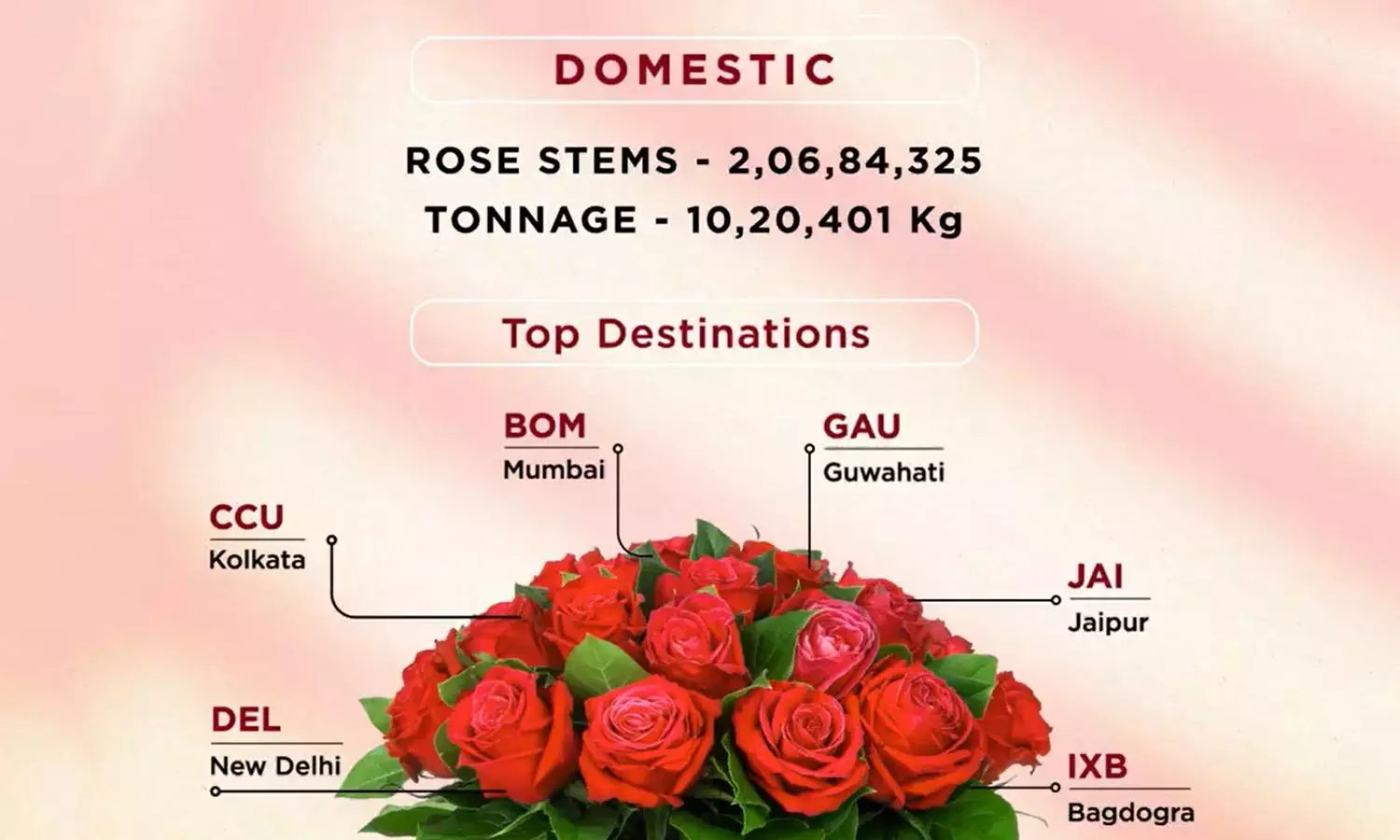BLR Airport handles 148% more domestic rose stems this Valentine
The top domestic destinations for roses from Bengaluru are Delhi, Kolkata, Mumbai, Guwahati, and Jaipur.

BLR Airport has shipped 29 million rose stems, weighing in at 1,222,860 kilograms this valentine's season, representing 108 percent increase in the tonnage processed compared to the same period last year. The airport witnessed growth in both international and domestic rose shipments, with 9 million stems bound for international destinations, marking a 14 percent increase from last year, and 20 million stems shipped domestically, reflecting a 148 percent increase.
“BLR airport has solidified its reputation as the No.1 for perishables in India, surpassing last year's bouquet of 15.4 million stems,” reads the release.
The top international destinations for roses from Bengaluru are Kuala Lumpur, Singapore, Kuwait, Manila, and Sharjah, while top domestic cities include Delhi, Kolkata, Mumbai, Guwahati, and Jaipur.
Maintaining quality, temperature control, and ensuring faster turnaround times are critical for perishable items like roses. BLR Airport has invested in real-time tracking to empower stakeholders to proactively address temperature excursions, ensuring the integrity of sensitive products. Advanced monitoring at dedicated cold chain centres guarantees an unbroken cold chain, translating into faster handling, enhanced security, and sustainable practices.
It also reads, “Looking ahead, BLR Airport with its partners WFS Bengaluru is committed to expanding its cold chain capacity to approximately 80,000 metric tonnes per annum and investing in the export of perishables. Our partnerships with two new partners, WFS and Menzies Aviation, for operating BLR Airport’s cargo terminals for 15 years is expected to further enhance cargo handling efficiencies, solidifying the Airport’s position as one of the leading players in the ever-evolving air cargo landscape.”



